Introduction to Red Light Therapy and Arthritis:
Arthritis is a chronic, inflammatory condition of the joints characterized by pain and mobility impairments. Red light therapy (RLT) has emerged as a possible complementary or alternative treatment modality for arthritis because of its anti-inflammatory and tissue-repairing properties. RLT exposes the body to low levels of 630–850 nm of red or near-infrared light. It penetrates through the skin and stimulates cellular functions. RLT is known to modulate inflammation, increase tissue repair, and improve circulation, which, in turn, decreases the symptoms of arthritis and enhances joint function. While further research studies are needed, initial evidence suggests that RLT could be a very beneficial, non-invasive, well-tolerated intervention in reducing pain, inflammation, and stiffness associated with arthritis. In consideration of light's power of healing, RLT may improve the quality of life for arthritis patients.

The Drawbacks of Traditional Arthritis Treatments:
Despite having pain relief functions, the traditional treatment for arthritis includes some disadvantages. It includes medications like NSAIDs and corticosteroids, which have side effects on the body's immunity. Invasive procedures, like joint replacement surgery, carry their own risks. In contrast to medications, RLT is non-invasive, well-tolerated, and tends to have very low side effects.[1] It is really safe and offers the most gentle approach to managing arthritis symptoms, making it possible to apply it in the long term without the danger of dependency or tolerance.
The Healing Effects of RLT on Arthritis Symptoms:
The key aspects that underlie the healing and disease-modulating effects of red light therapy (RLT) on arthritis symptoms are quite many:
- Reduction in Inflammation: RLT has been proven to reduce inflammation in arthritic joints, playing a vital role in pain, rigidity, and swelling management in patients. [2]
- Tissue Regrowth: RLT activates joint cells to repair and grow tissue. This is beneficial for patients whose cartilage and tissues are damaged, and it leads to improved health and function in the joint.
- Better Blood Circulation: RLT boosts the flow of blood around joints with the oxygen and nutrients transported to the affected area. This way, it quickens the healing processes and reduces inflammation, thus assuring the general health and mobility of the joint.
- Pain Management: RLT provides effective relief for arthritis pains. It works by targeting the pain receptors in the body and modulating the pain response in the body to provide much-desired pain relief without the associated side effects of the medicines.
- Improved Joint Mobility: Joint mobility is improved with RLT, as it reduces the stiffness in the joints and helps to relax the muscles and connective tissues around the joints. Hence, people suffering from arthritis can move more easily and do everyday work very conveniently.

Usage Scenarios and Relieving Arthritis Symptoms with RLT:
Red light therapy (RLT), when used at home and in the clinic, has proven to be effective in the treatment of arthritis.
- Home Care Treatments: Many elderly arthritis patients add RLT to their home care regimen. The use of portable devices or larger panels directs the red light exposure directly to the affected joints.[3] Home sessions are very convenient because the therapy is applied by the individual at their own convenience, possibly several times during the day, to ensure the best relief.
- Clinical Settings: Health professionals use RLT as part of the treatment for arthritis patients. These can be carried out in clinics or rehabilitation centres where the targeted RLT into the concerned joint area is done by professionals. A controlled clinical trial study[4] in 2019 for 48 patients with knee osteoarthritis showed the beneficial effects of red light therapy (RLT). Pain scores, as well as the improvement of joint function and quality of life, increased after four weeks of twice-weekly RLT. Clinically supervised sessions would thus warrant the proper dosage and monitoring to extract optimal therapeutic outcomes.
Incorporating RLT into Arthritis Management Regimes:
- It is advised that you discuss your interest in the use of RLT in the management plan for arthritis prior to its usage. The healthcare provider can give guidance based on your specific condition, medical history, and current treatment regimen.
- Your health provider is going to ask you about the symptoms related to your arthritis, such as if you experience pain, how much joint stiffness you experience, and how much decreased mobility you experience. These allow an assessment to be made on the inclusion of RLT into your general program of treatment and how this could be affected.
- As you feel comfortable and your health care provider advises, consider choosing among various RLT devices. These might be in the form of handheld devices, panel lights, or those you find in clinical settings. Make sure that the device emits the right wavelengths of either red or near-infrared light to harness therapeutic benefits.
- Work with your healthcare professional to design a treatment protocol for your needs that includes dosage needs, such as frequency, duration, and intensity of each RLT session.
- RLT can be used along with other forms of treatment for arthritis, such as medications, physical therapy, or lifestyle changes. Use RLT sessions, whether daily or weekly, per your health provider's advice. Follow the guidelines given on the proper positioning of the device and exposing the affected joints to the light. Be consistent for better results.
- Monitor and share with your healthcare provider any changes you notice after RLT sessions; he may adjust the treatment protocol according to your progress or any new developments in your arthritis symptoms.
Conclusion
Red light therapy has the potential to revolutionize arthritis care by providing a holistic approach to symptom management. The paradigms of arthritis care are starting to shift as users find personal success with RLT in gaining better mobility and relief from pain. Arthritis patients are now able to take control of the symptoms of arthritis and have a high-quality life, as RLT reduces inflammation, repairs tissue, and can even relieve pain.
References
[1] Glass G. E. (2021). Photobiomodulation: The Clinical Applications of Low-Level Light Therapy. Aesthetic surgery journal, 41(6), 723–738. https://doi.org/10.1093/asj/sjab025
[2] Hamblin, Michael R. "Mechanisms and applications of the anti-inflammatory effects of photobiomodulation." AIMS biophysics vol. 4,3 (2017): 337-361. https://pubmed.ncbi.nlm.nih.gov/28748217/
[3] Stelian, J et al. "Improvement of pain and disability in elderly patients with degenerative osteoarthritis of the knee treated with narrow-band light therapy." Journal of the American Geriatrics Society vol. 40,1 (1992): 23-6. https://pubmed.ncbi.nlm.nih.gov/1727843/
[4] Stausholm, M. B., Naterstad, I. F., Joensen, J., Lopes-Martins, R. Á. B., Sæbø, H., Lund, H., Fersum, K. V., & Bjordal, J. M. (2019). Efficacy of low-level laser therapy on pain and disability in knee osteoarthritis: systematic review and meta-analysis of randomised placebo-controlled trials. BMJ open, 9(10), e031142. https://doi.org/10.1136/bmjopen-2019-031142













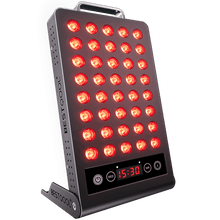
 Small
Small
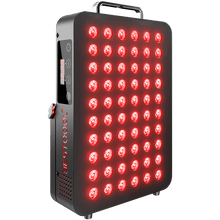
 Moderate
Moderate
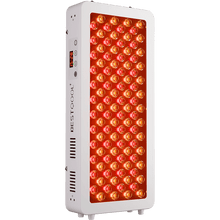
 Moderate
Moderate
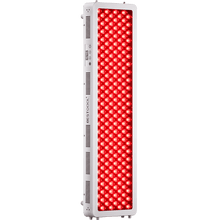
 Moderate
Moderate
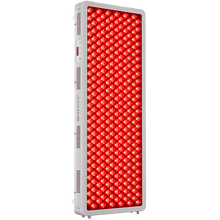
 Full
Full



